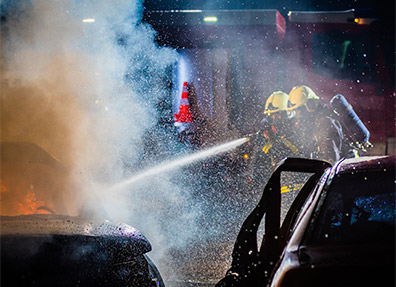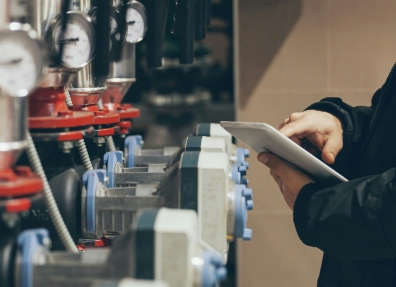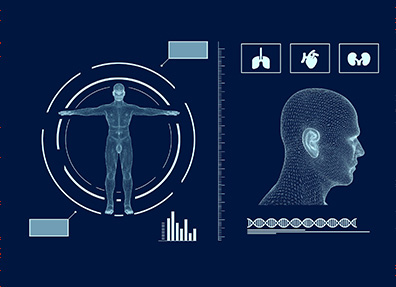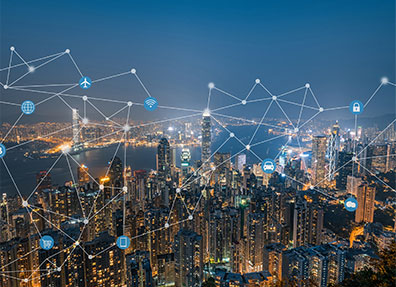Smart city
Smart cities development can impact the lives of billions of people around the world, and it is rapidly becoming a reality. In the smart city , urban infrastructure will be interconnected, devices from buses and cars to street lights, all linked to networks through IoT. Water and grids will be equipped with smart sensors. All of this should make our urban spaces more efficient, more accessible, less polluting, safer and more livable. The first characteristic of smart city is the technological base, which includes a plethora of smart cameras, sensors, wireless devices and data centers connected by high-speed communication networks. Among them, sensing is the core of intelligent infrastructure and an important part of any intelligent control system. The latest analysis shows that emerging sensor technologies will change the smart cities of the future. Advances in digitization and IoT are driving the mass adoption of sensor technology among cities, combined with key supporting technologies such as artificial intelligence (AI) and 5G high-speed networks, integrated sensor networks in cities are driving the establishment of a connected urban ecology system to achieve optimal utilization of public resources. Sensor networks include acoustic, radar, 3D camera sensors, environmental sensors, flow sensors, gas sensors, humidity and temperature sensors, etc. A sensor network built for one purpose (e.g. street lighting) can enable several other connected applications such as environmental monitoring, public safety, and a centralized network will help reduce recurring capital costs.
1.Urban underground pipe gallery
The urban underground pipe gallery is a municipal public facility built underground in the city for laying municipal public pipelines. Workers stay in a closed environment or space during the construction process, and protection of the workers is particularly important. The underground pipe gallery is equipped with various signal lines, heat pipes, gas pipes, telecommunication pipes, water supply pipes, power pipes, etc., where various signals and transmission objects meet. In order to fully ensure the environmental and people safety, it’s necessary to automatically monitor its conditions to achieve real-time, which mainly involves the temperature and humidity in the pipe gallery, gas leakage, harmful gas detection, etc. By configuring the corresponding sensors and alarms, and transmitting the signal to the monitoring center, and the data is analyzed through the supporting management software. If there is an abnormality, the system will automatically generate an alarm (audio-light alarm, SMS alarm, and email alarm are optional), and notify the relevant personnel as soon as possible to eliminate possible dangers in the bud, avoid causing big losses and affecting the normal work of pipes.
ME2-O2,ZE03-O2,ZE03-CO,MH-741A,ZE03-NH3,ZE03-H2S| Model | Detection principle | Detection gas | Detection Range |
|---|---|---|---|
 ME3-CO |
Electrochemical | CO | 0-1000ppm, Max 2000ppm |
 MH-410D |
non-dispersive infrared (NDIR) principle | CO2 | 0~10% Vol optional |
 MH-712B |
non-dispersive infrared (NDIR) principle | CO2 | 0~5% Vol optional |
 MH-711A |
non-dispersive infrared (NDIR) principle | CO2 | 0~5% Vol optional |
 MH-440D |
non-dispersive infrared (NDIR) principle | CH4 | 0~10% Vol optional |
 MH-742B |
non-dispersive infrared (NDIR) principle | Combustible gas | 0~100% Vol optional |
 ME3-NH3 |
Electrochemical | NH3 | 0-100ppm, Max 200ppm |
 ME3-H2S |
Electrochemical | H2S | 0-100ppm, Max 500ppm |
2.Pipeline pressure monitoring
Urban main steam pipelines, water supply pipelines and other pressure pipelines are the most important infrastructure of urban and thermal power plant equipment. The safety of their operation is not only related to the long-term normal and safe production of power plants, but also related to people's lives and property. However, due to various reasons in the past, power plants did not pay enough attention to the safety management of pressure pipelines, resulting in frequent accidents. According to the statistical analysis of the causes of 200 various pressure pipeline accidents over the years by the national supervision authority, problems mainly come from management, pipe and fitting quality, installation, design and corrosion. Winsen specializes in designing and manufacturing a series of pipeline pressure sensors, providing complete solutions for the urban pipeline pressure monitoring.
WPBH01,WPAK63,WPDK05,WPDK06| Model | Detection principle | Detection gas | Detection Range |
|---|
3.Smart public toilet
In the year of 2018, a public toilet in Shenzhen was successfully upgraded to a smart public toilet. The public toilet is equipped and connected to the real-time odor monitor, temperature and humidity sensor, intelligent lighting, human body sensor, emergency caller and other 8 sub-items through the Internet of Things platform, a total of 82 sets of smart components. The system collects big data in the cloud server, and then calculates and analyzes 11 indoor environmental parameters in real time, intelligently dispatches deodorizing equipment, fresh air system, lighting operation, etc. Specifically, the probe of the odor monitoring system can monitor the concentration of odorous substances in the toilet, such as the ammonia sensor. Once the concentration exceeds the set standard, the device will automatically turn on the deodorization. The public toilet temperature and humidity sensing system is like an automatic air conditioner, which can automatically adjust the temperature and humidity according to the situation. In addition, after the human body sensor senses that someone is coming in, it will automatically turn on the music player, the independent exhaust and other equipment.
In fact, there have been precedents in many cities across the country for connecting toilets to the Internet of Things with the help of gas sensor technology. Ammonia sensors, temperature and humidity sensors, smoke detectors and smoke controllers have been installed in many toilets in Dongguan Street, Yangzhou City, Jiangsu Province. Shanghai has also built or renovated many public toilets. The property management can monitor the data in the toilet to facilitate their cleaning and management.
ZE03-DG,ZE03-NH3,ZE03-H2S| Model | Detection principle | Detection gas | Detection Range |
|---|
4.Smart manhole cover
The advancement of IoT technology provides strong support for the management of public assets such as manhole covers. Through all-round monitoring of the state of the manhole cover, timely alarms are issued when the manhole cover is opened or displaced to reduce accidents. According to the urban manhole cover distribution, real-time monitoring can be quickly realized through CWSN/LORA wireless cloud sensor private network, or GPRS, NB-IoT wireless cloud sensor public network and other networking methods, greatly shortens the construction time and reduces the implementation cost. Besides monitoring the state of the manhole cover, more functions can be achieved including monitoring the height of the downhole liquid level and harmful gases concentration in the well, real-time alarm, automatic inspection, timely disposal, etc to ensure safe operation. Multiple high-precision smart gas sensor modules need to be integrated since there are multiple gases to monitor in the manhole. Winsen has gas sensors for hydrogen sulfide, ammonia, carbon monoxide, methane, TVOC, nitrogen dioxide, formaldehyde and other target substances. Winsen provides smart gas detection solutions for smart cities, smart factories, urban underground environmental system monitoring.
ME2-O2,ZE03-O2,ZE03-CO,MH-741A,ZE03-NH3,ZE03-H2S| Model | Detection principle | Detection gas | Detection Range |
|---|---|---|---|
 ME3-CO |
Electrochemical | CO | 0-1000ppm, Max 2000ppm |
 MH-410D |
non-dispersive infrared (NDIR) principle | CO2 | 0~10% Vol optional |
 MH-712B |
non-dispersive infrared (NDIR) principle | CO2 | 0~5% Vol optional |
 MH-711A |
non-dispersive infrared (NDIR) principle | CO2 | 0~5% Vol optional |
 MH-440D |
non-dispersive infrared (NDIR) principle | CH4 | 0~10% Vol optional |
 MH-742B |
non-dispersive infrared (NDIR) principle | Combustible gas | 0~100% Vol optional |
 ME3-NH3 |
Electrochemical | NH3 | 0-100ppm, Max 200ppm |
 ME3-H2S |
Electrochemical | H2S | 0-100ppm, Max 500ppm |







